 Hardly in the modern world there is a person who has never heard of hallucinations. And the most interesting thing is that this phenomenon can arise, both in patients and in apparently healthy people.
Hardly in the modern world there is a person who has never heard of hallucinations. And the most interesting thing is that this phenomenon can arise, both in patients and in apparently healthy people.
In the common people this phenomenon can have a different name - "mirage", "vision", etc. It is necessary to understand that hallucination is not a norm, but often indicates a certain deviation in the work of the brain and the organism as a whole.
There are pseudo-hallucinations and true ones. In order to understand what is at stake, it is necessary to disassemble both phenomena in more detail.
Contents
- True mirages
- What is pseudo-hallucination?
- What's the difference?
- History of the
- Study Why is it important to distinguish true visions from false ones?
- Pathogenesis and etiology
- Causes of mirages and visions in elderly people
- Classification of faults in perception
- How and what to treat?
True mirages of
Hallucination is nothing but a mistake in the perception of a person around the world. An individual who is prone to failure of perception, sees or hears that which in any way can not be in real life. There will be this noise coming from the vase, or the presence of a horned creature in the house - all this will become a malfunction in the process of perception.
Information received by the organs of hearing or sight, falls for analysis in the brain, but the upset mentality supplements it with non-existent, false elements. As a rule, people who drink alcohol excessively( a state of white fever), or who are under the influence of any narcotic substance( spice, heroin, etc.) are exposed to this phenomenon. Often, hallucinogenic perception occurs in children who try to "breathe glue."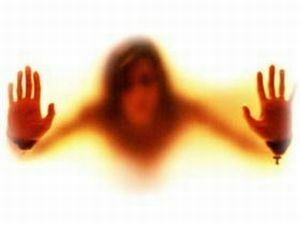
A person who works with toxic elements can also fail in the perception of reality. For example, a painter can experience something like this if, while working in a room with paint, a respirator is not wearing and a window is not open.
The hallucination feature is that it does not always pop up in a legible form. Nevertheless, a person can fix their attention on it. Those.it will not be difficult to communicate with the surfaced image, in any way to interact with it, etc. The patient can control the vision, change its behavior and form( naturally, without understanding it).
What is pseudo-hallucination?
This phenomenon has not yet been studied completely. In the world of psychiatry it is also called a "false hallucination."This is a special kind of mirage that pops up spontaneously. A person for no reason begins to see or hear what can not really be.
The difference from the usual true hallucination is that the vision is in no way connected with the outside world. Everything happens in the head of the patient.
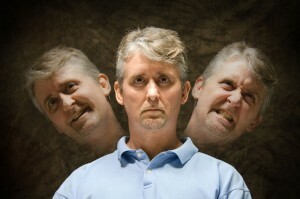 Different words that are alien to the individual, but rush into consciousness, unconscious body movements, and images that have nothing to do with the picture of what the patient is observing at the moment - all this is a vivid example of pseudo-hallucination.
Different words that are alien to the individual, but rush into consciousness, unconscious body movements, and images that have nothing to do with the picture of what the patient is observing at the moment - all this is a vivid example of pseudo-hallucination.
A feature of this type of vision is its appearance - a person can see the image emerging in front of the eyes in small details, feel a slight noticeable change in the intonation of the voice, ringing in the ears, etc.
A person feels a pseudo-vision "soul."For example, he perfectly understands that there is no one in the room, but clearly hears the noise emitted by the tentacles of the octopus. The wall on which he can look does not look suspicious, but in his head literally rustle the numerous paws of spiders. Cases can be different.
What's the difference?
It would seem that false and pseudo-worlds do not make a difference, but it does exist. The difference between an ordinary hallucination( true) and pseudo-hallucination lies in the attitude of the patient himself to these visions.
With a true hallucination, an individual simply believes that what is perceived by his vision and hearing organs really does exist. He has no doubt that the people around him also see / hear. He tries to interact with the vision, and in most cases he succeeds( in his own mind).
With pseudo-visions, a person does not experience anything like this. He fully admits that the visible / audible can not take place in real life. The vision remains a vision and, despite its denial, it does not leave the patient.
If to take as an example a situation when at ordinary hallucination the patient sees a dragon, then he tries in every possible way to wave away from him, hides in another room, tries to close his ears, etc. A pseudohallucin-curing patient will not behave this way.
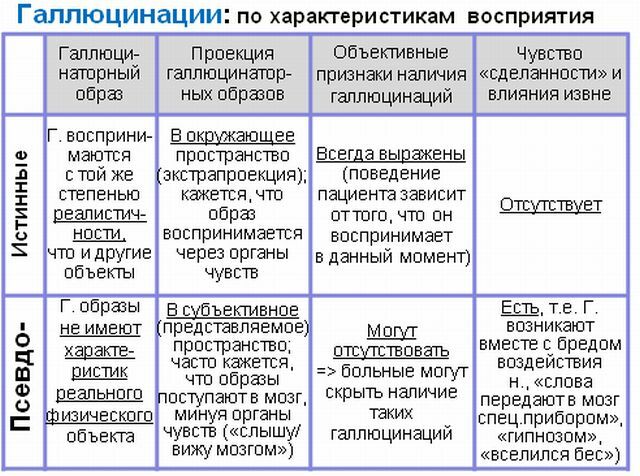
History of research
This phenomenon, as a hallucination, is known to mankind from time immemorial, because a malfunction in the psyche and, as a result, distortion of reality, a man of any epoch was exposed. However, on the study and explanation of this phenomenon until the 19th century, none of the scholars paid attention to. As a rule, a hallucination in ancient times was akin to a mystical skill, witchcraft, or "a vision of the seers" and even "a gift from above."
With the development of such sciences as "psychology" and "psychiatry" in the middle of the 19th century, scientists paid special attention to this phenomenon. Especially it is worth noting the work of Bayarzhe, written by a scientist in 1842, in which he detailed the nature and nature of the disorders of perception. In his opinion, the failure in consciousness occurs due to 3 main factors:
- undesirable enhancement of memory work, as well as imagination;
- delay analysis of what is happening;
- movement of sensory apparatus inside.
It was he who first divided the visions arising in the patient's head into 2 types:
- psychosensory - complete hallucinations caused by the joint work of the imagination of the person and his perception organs;
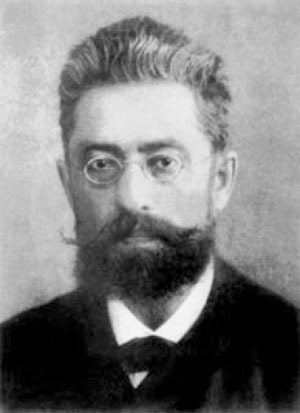
Kandinsky is one of the first researchers of the psychic perception phenomena, the incomplete mirages, in the process of reproduction of which only memory and imagination are involved, but sense organs do not play a role.
On the study of incomplete( psychic) hallucinations made a special accent another scientist - V.Kh. Kandinsky. In his opinion, pseudo-hallucinations arise due to the excitation of sensory regions of the brain. In his book, this phenomenon is described as the emergence of voices "inside the head", the appearance of visions in the "inner gaze."
When studying pseudo-images, Kandinsky put the experience on the patient. He, in turn, told how he saw an imaginary lion. Despite the fact that the image of a fictional animal was floating in the air in his direction, and soon the touch of his paws was felt, the patient was not at all afraid of him, for he knew perfectly well that there was no lion next to him.
Pseudohallucinations can manifest themselves in the form of thoughts. For example, when researching LM.Elazina, the object was a middle-aged patient who claimed that "something" was stealing her thoughts, and replacing them with others - alien to her. She clearly heard what other people were saying to her, but voices arose in her head.
Why is it important to distinguish true visions from false ones?
Psychiatrists working with the patient to better understand what they are dealing with, focus their attention on the following points:
- the patient's attitude to the vision( does he believe in what is happening);
- perception of vision( vision, hearing, intuition, skin receptors, etc.);
- link the vision with the environment in which the patient is located;
- patient response.
If you fill out all the listed items, you can give a clear answer to which type of hallucination( true or false) the patient is exposed to.
It is worth noting that true and false visions are different symptoms, characteristic of various diseases and disorders. It is important to distinguish them, since it is precisely this that makes it possible to accurately determine the presence of that or other mental illness.
A person exposed to true hallucinations is dangerous to society, as his further reaction to visions is unknown. He can grab a knife, set fire to a building, commit suicide, and so on.
With pseudo-worlds, the patient realizes what is happening( in most cases), and therefore is not dangerous for himself and others.
Pathogenesis and etiology of
A failure in the perception of the outside world can arise due to various somatic, neurological and mental diseases. The main causes of hallucinations:
- Drug addiction and alcoholism .People who are addicted to drug and alcohol addiction often become victims of
 obsession and paranoia. On this basis, they can be subject to various kinds of terrible visions and awesome sounds. The fears in their subconscious are perverted and incarnate into hallucinations. Often this leads to panic, a desire to escape, and even suicide.
obsession and paranoia. On this basis, they can be subject to various kinds of terrible visions and awesome sounds. The fears in their subconscious are perverted and incarnate into hallucinations. Often this leads to panic, a desire to escape, and even suicide. - Syphilis of the brain .Sharp sounds and voices can arise due to the aggravation of a certain area of the brain.
- Diseases of the cardiovascular system .An illness associated with poor heart function often leads to a change in mood, and this in turn often causes a feeling of fear. Against this background, various mirages can arise.
- Rheumatic diseases .They lead to insomnia, irritability and general weakness. In this state, the consciousness is weak, which contributes to the occurrence of hallucinations.
- Tumors and cysts of the brain .They are( though infrequently) yet another cause of mirages. This is facilitated by the depletion of the body, damage to certain areas of the brain, as well as the use of powerful medications.
- Infection of the infection .The presence of infection leads to a strong temperature. This, in turn, contributes to the occurrence of hallucinations.
Causes of mirages and visions in elderly people
In elderly people, hallucinations are manifested most often, this is because their body is doubly exposed to various diseases and disorders of a neurological, somatic and mental nature:
- depression;
- cardiovascular diseases;
- senile psychosis;
- brain disease;
- insomnia;
- tumor.
Also, older people take strong medications, which causes the appearance of mirages. Often, people of old age are isolated from society, which may well be a reason for a failure in the perception of the environment.
Classification of faults in the perception of
Failure in the perception of the world can occur in different ways, in this regard, identify the following main types of hallucinations:
- Spotting hallucinations. In this case, various images and images appear in front of your eyes. It is possible that the hallucination of
 becomes the reproduction of a whole scene and even a story in which the patient plays an important role, or is present from the perspective of an observer.
becomes the reproduction of a whole scene and even a story in which the patient plays an important role, or is present from the perspective of an observer. - Auditory disorders. A person hears whispers, speech and even cries that can be both positive and negative. This phenomenon is most affected by people suffering from drug dependence. Auditory hallucinations often occur in patients with schizophrenia.
- Olfactory hallucinations. The patient feels smells, which can not be. Most often this happens due to damage to the temporal part of the head, or it becomes a consequence of schizophrenia.
- The causeless change taste .There are tastes, not characteristic of food, or drink.
- Tactile sensations .The patient feels a touch to his body, despite the fact that no one is around.
- Hypnagogic( hypnopopic) hallucinations. Optical illusion. Occurs in healthy people during awakening, or vice versa - falling asleep.
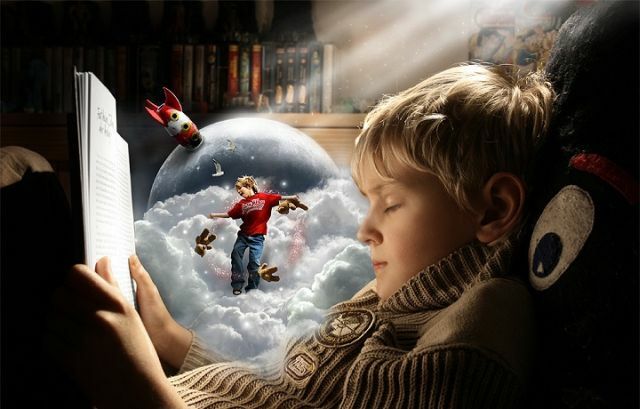
How and what to treat?
First of all, there is a clarification of the reason, due to which there were disorders of perception. In themselves, true and pseudo-hallucinations do not arise, since they are only the consequence of a particular mental or neurological disease. Often this phenomenon is combined with a state of fear, anxiety and even panic.
The course of treatment is individual for each patient, without fail, before the appointment, the character of the disease is determined. If hallucination causes a somatic disorder( for example, the work of a certain internal body), then the actions of the doctors are directed at its elimination.
 If hallucinations are caused by taking any medications, then a thorough analysis and exclusion of these medicines takes place. As practice shows, the cancellation of a certain drug contributes to the restoration of the mental state of the patient.
If hallucinations are caused by taking any medications, then a thorough analysis and exclusion of these medicines takes place. As practice shows, the cancellation of a certain drug contributes to the restoration of the mental state of the patient. If visions arise because of a mental disorder, the patient is hospitalized. There are cases when treatment occurs at home, but this is only possible when the patient does not pose a danger to others and himself.
When hallucinations become a consequence of excessive intake of alcohol or drugs, the actions of medical personnel are aimed at eliminating the dependence of the patient.
The actions of psychiatrists are aimed at revealing the patient's attitude to visions. The desired result is the realization that hallucinations are a figment of the imagination, and no more, that is, to begin with, it is necessary to transfer the patient to the category of pseudo-hallucinations. One of the ways that allows to achieve this is to analyze the vision( for example, facial expressions, gestures and speech of the image) in order to compare it with reality.
Doctors are attentive to the patient's behavior, since cases when he tries to conceal the occurrence of a hallucination are not uncommon, in order to leave the psychiatric ward as soon as possible.
In addition to oral work with the patient, he is prescribed medication( most often in the form of injections).The most effective
 agents are:
agents are: - Teasercin;
- Aminazine;
- Haloperidol;
- Trisedil.
All of these drugs contribute to the removal of symptoms of mental illness, such as delirium, panic attacks and visions.
If the condition in which hallucinations occur, then it will go to chronic. The patient simply begins to consider his vision as a normal life phenomenon.



